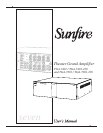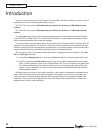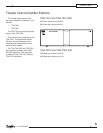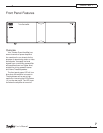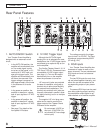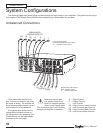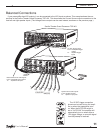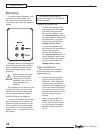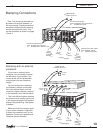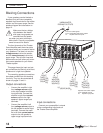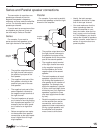
User's Manual
4
CHAPTER 1
Thank you for purchasing a Sunre Theater Grand Amplier. We hope you enjoy it and the music it
makes as much as we have enjoyed creating it for you.
The TGA-7401 can produce 400 watts rms per channel into 8 ohms and 800 watts rms into
4 ohms.
The TGA-7201 can produce 200 watts rms per channel into 8 ohms, and 400 watts rms into
4 ohms.
The big breakthrough is the uncanny tracking downconverter, which uses 18 Herculean Mosfets
in the TGA-7401 and the TGA-7201. This allows the amplier to produce phenominal power output,
without the heat generated by conventional designs.
The circuit boards are heavy glass epoxy, double sided, with a Faraday shield on the back side. All
resistors in the signal path are 1% tolerance, metal-lm. Critical capacitors are lm devices with high
dielectric strength and ultra low absorption characteristics. An enormous power source built around a
massive power transformer provides the ultimate muscle for limitless dynamics.
We could go on and on, but here’s the best part: we’ve included two kinds of outputs on the front
left and front right channels:
(1) a standard voltage-source (i.e., near zero impedance) output for all typical applications and:
(2) a higher-impedance current-source output, which many prefer for electrostatic, planar mag-
netic, or ribbon speakers, such as our Cinema Ribbon line. Or you can biwire your system with
the voltage source driving the woofer(s) and the current source driving the upper part of the
system. In many cases this provides by far the best possible interface between the amplier
and the speaker system.
Whichever way you decide to hook up the amplier, it will create a multilayered soundstage that is
deep, wide, three-dimensional, and utterly believable. The optional current-source output can coax
forth a sensuous, delicately detailed musical voice long associated with low-powered classic tube
ampliers. (The current-source characteristic of vacuum tubes is the dominant factor in the sound-
stage delivery of classic tube ampliers).
Introduction



